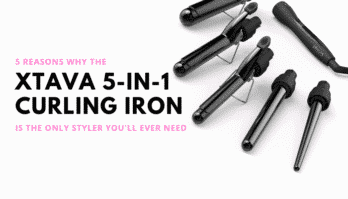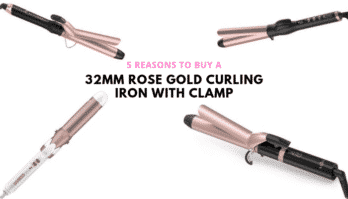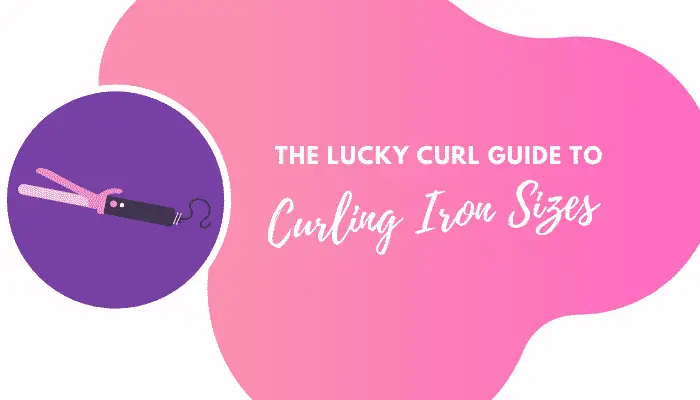If you’ve ever wondered, what is my curl type?, you have come to the right place.
In this helpful guide, we take you through the types of naturally curly hair and some common questions asked by the curly girl community.
What is My Curl Type? Discover Your Curl Pattern and Texture
Figuring out what your natural curls are can be better identified by knowing more of the various curl types. Naturally Curly has made it easier for us ladies with curly hair to identify the different types by providing a reliable classification system.
There is the type 2 wavy hair which is broken down into three parts. There is 2a, where the curls are more S-shaped and starting near the scalp, 2b which has the same S-shaped pattern but has more frizz on the crown, and 2c where the curls are the coarsest.
Women who have curly hair belong to the third hair type. 3a hair tends to be big and loose while 3b curls are more like ringlets and corkscrew curls. For 3c, these are the tighter corkscrew curls and are coarser compared to Type 2.
If you have naturally kinky hair, then your hair type belongs in type 4a or coily hair. Your hair type tends to be more delicate because they are tightly coiled. For 4b, you will notice that your hair strands have a z shape to them with less defined curls. In the case of 4c, the hair density will be the same as that of 4b. Curly hair that falls in this category can change from coarse to superfine, to wiry.
Type 2 (Wavy)
- Type 2a
Arizona Muse has these nice waves that are not exactly curly which give her plenty of hairstyling options to consider. If your curl pattern is similar to hers, then you’ll be glad to know that you can straighten it out or make your waves curlier.
- Type 2b
Type 2b are these large S-shaped waves which are similar to that of Tori Kelly. You might have noticed that your hair has more definition to it when it is wet, but if you don’t use the right products, you may not show off the natural S-pattern completely.
- Type 2c
If you have been sporting waves and curls then you fall in this category just like Lorde. This natural hair type tends to be unpredictable at times because there are days when you get nice curls, then the next your hair doesn’t want to cooperate. A good technique here is to braid your hair when you sleep to have better waves in the morning.
Type 3 (Curly)
- Type 3a
Annalynne McCord is the perfect example of this type. Her curls are quite springy plus they are large like the chalk used in sidewalks. Products that contain sulfate are not recommended for 3a hair because they can easily dry out your scalp and hair strands.
- Type 3b
Crystal Westbrook’s ringlets put here in the Type 3b section. This type of hair can be voluminous but only if you know how to care for it. A styling product can be used to add more definition to hair strands that are out of shape.
- Type 3c
Corkscrew curls, anyone? Nathalie Emmanuel, the lady who portrayed Khaleesi’s right-hand maiden, has a type 3c hair. This is by far the coarsest out of the Type 3 category. There will be times when you feel that your hair is a bit dry hence co-washing is highly recommended rather than shampooing your locks regularly.
Type 4 (Coily)
- Type 4a
Ladies, if your hair curls are tighter and high density, your hair is similar to that of Yaya Dacosta. The hair strands have fewer cuticles so you need to add a protective layer to prevent damaging your hair. Apply a moisturizing product on your hair before you sleep to prevent rubbing which can make your hair frizzy in the morning.
- Type 4b
Willow Smith’s coily hair has the Z shape pattern associated with Type 4b hair. The texture of her hair strand will be wiry or fine which can shrink considerably. If you want to make your 4b hair appear longer, you can try flexi rod sets or twist outs.
- Type 4c
The combination of tight coils and Z-shaped hair sums up Type 4c which is the same as that of Lupita Nyong’o’s. Compared to another type 4 texture, 4c hair will not clump into coils unless you apply some styling products and techniques.
Curly Girl Common Questions
There are a few questions that popped in my head when I started wondering about my hair type which I think other ladies with curly will be asking too. Here they are:
How do I know my natural hair type?
Based on my research, I learned that there is more to types of hair than straight, curly, and wavy. It appears that there are other factors that you have to consider. You will have to know your hair texture, hair structure, scalp moisture, and hair porosity. You can learn more about them here.
What are the different types of natural hair?
I did not realize that curls can come in different types! Now that I have been able to identify what my hair type is, I thought I’d share with you what I learned. There are three types and these are type 2, type 3, and type 4. Each type is further broken down into three categories that are labeled a, b, and c. Each type describes how the curls look and their texture too. We’ll get into details later on.
What is a curl pattern?
A curl pattern talks about how your curls fall around you. Do you have s-shaped curls or z-shape? You can see yours by looking at yourself in a mirror, but closer inspection is needed, so you will know your hair type.
Is it possible to be between curl types?
The answer here is yes! It is possible to find your hair in between these hair types. There are those who sport both waves and curls on their hair at the same time with various degrees of curls.
Final Thoughts
For someone who has natural hair, discovering your exact hair type can help you determine what are the best hair products to use. Understanding what hair type you have can save you a lot of heartaches when styling it since you will have a better idea of which products to you. Believe me, I have been in this position before, and I don’t want you to end up having bad hair day all the time.
Just to recap the various hair type if you have Type 1 hair, yours will be straight. The second type, on the other hand, is best described as having wavy hair, while Type 3 hair is curly. Type 4 describes coily hair strands which may be a bit fragile against the elements because of its texture.
Knowing you have curly hair is one thing, knowing what kind of hair you have is another. I am glad that I was able to dig a bit deeper into the various types of curly hair because I am now aware of what products may work well with my hair or not. You may want to do the same when figuring out your hair type as much as possible because you don’t want to end up choosing the wrong products on your beautiful hair.



